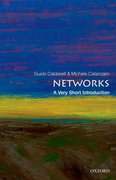By Michele Catanzaro and Guido Caldarelli
Thanks to a single Facebook post in 2010, an extra 340,000 people went to vote in the 2010 USA Congress elections. This striking discovery, made by political scientist James Fowler and colleagues, reveals the extent to which social networks can influence the basic workings of democracy. Of course, Facebook is just one of the many networks in which people today have embedded themselves. Every day, a typical person might meet friends and colleagues, log in to email and twitter accounts, send text messages and answer phone calls. There’s more: when this typical person takes a plane, makes purchases, or transfers money, it implicates her in further networks. In an IT intensive society, all these actions leave tracks. This poses huge privacy protection questions, but it also provides an unprecedented opportunity to study people and networks quantitatively.
Centuries have passed since mathematician Leonard Euler showed for the first time that thinking in terms of networks can be extremely revealing: he solved the Königsberg bridge problem (can the seven bridges of the city of Königsberg all be traversed in a single trip without doubling back?) by applying logic in this way. Decades have passed since sociologists and psychologists started to draw maps of human relations. But the science of networks has still much to tell, and the current data deluge is giving it a second youth. So how has thinking in terms of ‘networks’ helped us in recent years?
The financial crisis
In a paper published in August 2012, physicist Stefano Battiston and his colleagues defined the DebtRank, a powerful tool to evaluate which banks would generate the worst consequences if defaulting. This measure is inspired by PageRank, the algorithm that allows Google to discover the most relevant pages on the web. Battiston’s measure takes into account the network of stock ownership among banks, to identify those that are ‘too central to fail’ (in contrast with the classical ‘too big to fail’ paradigm). Such refined measures would be impossible without a networked approach to the large amount of financial data generated every day.
The 2009 swine flu pandemic
Old age plagues, like the Black Death, took years to spread. On the contrary, H1N1 jumped from one side of the planet to the opposite in a matter of weeks. The main difference between then and now? Modern infections have a powerful channel they can use to spread globally: the air flight network. Hence, the global map of airports’ connections was used by physicist Alessandro Vespignani and his colleagues as the basis for modeling the spread of H1N1, and as a result they were able to forecast the peaks of the disease in different countries.
Offers of employment
In the 1970s, sociologist Marc Granovetter discovered the ‘strength of weak ties’: he concluded that it was easier to secure job offers through acquaintances than via close friends. Decades later, Linkedin is one of the best applications of this discovery: people that have been contacted by headhunters or got offers through this social network know it well. Understanding how networks work can be very valuable to better handle relations, both online and offline.
Relationships: from Medici to Messi
Cosimo de’ Medici’s leadership of fifteenth century Florence can be explained in part by his ability to make the most out of the network of relations between families in the city; this paper in The American Journal of Sociology looks at how ‘Medicean political control was produced by means of network disjunctures within the elite, which the Medici alone spanned’. Similarly, the differing performances of football player Lionel Messi when playing for Barcelona and Argentina can be partially understood when you consider the different pattern of relations between the other players in the two teams.
Criticism of network sciences should be taken seriously: risks can include unreliable data, carelessness with details, drastic simplifications in models, and fake trends. In general, scientists are, with reason, suspicious towards holistic all-purpose ‘theories of everything’. However, careful and intelligent application of network tools can continue to deliver a wealth of results in the future.
Michele Catanzaro is a freelance journalist based in Barcelona, Spain. He works for media in the UK (Nature, PhysicsWorld), Spain (El Periódico de Catalunya), and Italy (Le Scienze). He holds a PhD on Dynamics in Complex Networks by the Technical University of Catalonia (Barcelona), and is co-author of Networks: A Very Short Introduction.
Guido Caldarelli is Professor in Theoretical Physics at IMT Institute for Advanced Studies Lucca and a member of Complex System Institute of the National Research Council, Italy. He is the author of more than 100 scientific papers and an expert of scale-free networks and self-similar phenomena, especially of their applications in financial and economic systems. He is the author of the textbook Scale-Free Networks and co-author of Networks: A Very Short Introduction.
Subscribe to the OUPblog via email or RSS.
Subscribe to only VSI articles on the OUPblog via email or RSS.
View more about this book on the ![]()
![]()



[…] Medici got to power and how can you get a job? Networks are the answers to many of this questions. This post on OUP blog by G. Caldarelli and me explains how. This entry was posted in Uncategorized. […]
[…] in the following links a short video and a blogpost on the […]
[…] in the following links a short video and a blogpost on the […]